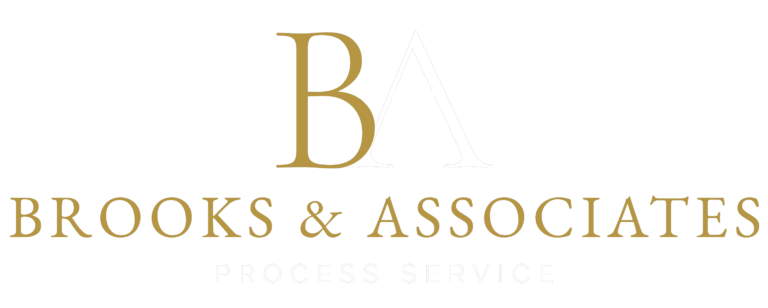Understanding Subpoenas in Alabama
Types of Subpoenas
In Alabama, there are two main types of subpoenas: subpoena ad testificandum and subpoena duces tecum. The subpoena ad testificandum requires the witness to testify, while the subpoena duces tecum requires the production of documents or other tangible evidence. It’s important to understand the specific type of subpoena you have received in order to respond appropriately. For a more detailed breakdown, refer to the table below.
| Type of Subpoena | Purpose |
|---|---|
| Ad Testificandum | Testimony |
| Duces Tecum | Documents |
When preparing for a subpoena, it’s crucial to know the distinction between these two types and the corresponding requirements for compliance. Seeking legal advice on this matter is highly recommended to ensure proper understanding and response.
Legal Requirements for Responding to a Subpoena
In Alabama, it is crucial to understand the legal requirements for responding to a subpoena. Compliance with these requirements is essential to avoid legal consequences. When preparing to respond to a subpoena, it is important to carefully review the document to ensure full compliance with the law.
One important aspect to consider is the protection of privileged information. Alabama law provides specific guidelines for protecting privileged information when responding to a subpoena. It is imperative to identify and safeguard any privileged information to prevent unauthorized disclosure.
Additionally, it is advisable to consult with legal counsel to ensure proper compliance. Engaging an attorney can provide valuable guidance and support throughout the process. Communication with legal counsel should be clear and timely, and seeking legal advice on specific aspects of the subpoena is highly recommended.
Lastly, it may be beneficial to present structured, quantitative data in a table format to provide a clear overview of relevant information. This can help to streamline the process and ensure that all necessary data is accounted for.
Understanding the Subpoena Process
When responding to a subpoena in Alabama, it’s crucial to understand the legal requirements and procedures involved. This includes the timeline for responding, the manner in which documents should be produced, and any specific instructions provided by the issuing party. It’s important to act promptly and meticulously follow the guidelines to avoid potential legal consequences.
Additionally, it’s advisable to maintain clear and organized records of all communications and actions taken in response to the subpoena. This can help in demonstrating compliance and ensuring that all necessary steps have been taken. Consider using a table to document the timeline of events, including dates of receipt, actions taken, and deadlines for response.
Tip: Keep detailed records of all interactions and communications related to the subpoena. This can serve as evidence of compliance and help in addressing any potential disputes or challenges.
Preparing Documents for Subpoena Compliance
Identifying Relevant Documents
When identifying relevant documents, it is crucial to prioritize materials that directly relate to the subject matter of the subpoena. This ensures that the most important information is readily available for compliance.
Consider creating a table to categorize the identified documents based on their relevance and significance. This structured approach can help in presenting the information clearly and concisely.
It is also important to review the identified documents for accuracy and completeness. This step ensures that the materials provided are thorough and meet the requirements of the subpoena.
Tip: When organizing the documents, consider using descriptive file names and labels to facilitate easy retrieval and reference during the compliance process.
Organizing and Reviewing Documents
After organizing and reviewing documents, it’s important to identify any sensitive information that may require special handling. This includes privileged communications, confidential data, and proprietary information.
To effectively manage this, consider using a Markdown table to categorize the types of sensitive information and their corresponding handling requirements. For example:
| Type of Information | Handling Requirement |
|---|---|
| Privileged Communications | Notify Legal Counsel |
| Confidential Data | Secure Storage |
| Proprietary Information | Limited Access |
Additionally, create a bulleted list of best practices for handling sensitive information:
- Limit access to authorized personnel
- Encrypt electronic files
- Use secure file storage
- Implement access controls
Remember, protecting privileged information is crucial for compliance with a subpoena. As a tip, always seek legal advice if unsure about handling sensitive information.
Protecting Privileged Information
When preparing documents for subpoena compliance, it is crucial to protect privileged information from disclosure. Privileged information includes sensitive and confidential data that is protected by law, such as attorney-client communications, trade secrets, and other legally privileged materials.
To safeguard privileged information, consider implementing a table to categorize the types of privileged information and their respective protection measures. This table can help ensure that all relevant privileged information is identified and appropriately protected.
Additionally, it is important to clearly communicate with legal counsel regarding the handling of privileged information. This may involve establishing protocols for reviewing, redacting, and securely storing privileged documents to prevent inadvertent disclosure.
Remember, protecting privileged information is a legal and ethical responsibility that requires careful attention and adherence to legal guidelines and best practices.
Working with Legal Counsel
Engaging an Attorney
When engaging an attorney, it’s crucial to thoroughly vet their experience and expertise in handling subpoena compliance. Attention to detail and a deep understanding of Alabama’s legal requirements are essential. Additionally, consider the attorney’s track record in successfully navigating subpoena processes.
- Implement a table for presenting structured, quantitative data. Ensure it’s succinct and formatted correctly in Markdown.
- Use a bulleted or numbered list for less structured content, like steps, qualitative points, or a series of related items.
It’s important to communicate openly and transparently with your attorney. Establishing clear lines of communication and providing all relevant information can greatly aid in the preparation for a subpoena.
Communicating with Legal Counsel
When communicating with legal counsel, it is important to maintain open and clear lines of communication. Transparency is key in ensuring that all relevant information is shared in a timely manner. Additionally, active listening during discussions with legal counsel can help ensure that all concerns and questions are addressed effectively.
It may also be beneficial to maintain a record of all communications with legal counsel, including emails, phone calls, and in-person meetings. This can help provide a clear timeline of discussions and decisions made in collaboration with legal counsel.
Tips for Effective Communication with Legal Counsel:
- Be honest and forthcoming with all information.
- Ask clarifying questions to ensure a thorough understanding of legal advice.
- Keep a written record of all communications for future reference and documentation.
Seeking Legal Advice
When seeking legal advice, it’s important to prioritize confidentiality and honesty. Open communication with your attorney is crucial for a successful outcome. Additionally, consider the following tips:
- Be transparent about all relevant information.
- Take notes during discussions with your attorney.
- Follow your attorney’s guidance closely.
Remember, your attorney is your advocate and is there to protect your best interests.
When it comes to working with legal counsel, it’s essential to have a reliable and efficient process service. At Brooks & Associates, we understand the importance of seamless legal support and strive to provide the highest level of efficiency in every serve. Our team is dedicated to ensuring that your legal needs are met with precision and professionalism. Whether you require assistance with document filing, court filings, or other legal processes, our commitment to excellence sets us apart. Visit our website to learn more about our comprehensive process service and discover how we can streamline your legal proceedings.


